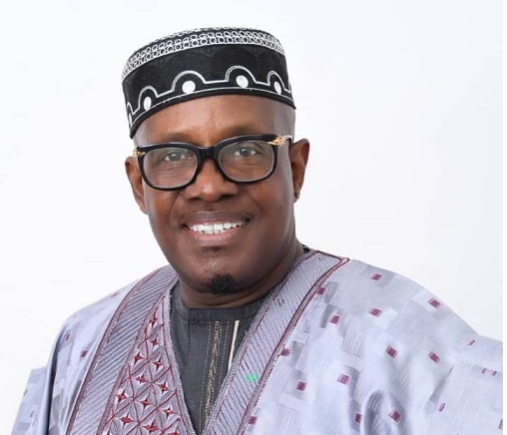
(CNN)Brains are not preserved in the fossil record, making it impossible to know how modern human brains differ from our long-extinct ancestors, the Neanderthals.From fossilized skulls we know that their brains were big — slightly bigger than ours, in fact — but they tell us little about their neurology and development.Scientists from the University of California San Diego have come up with an exciting and provocative way to begin to answer this question. They have created blobs of brain tissue genetically modified to carry a gene that belonged to Neanderthals and other archaic hominins but not Homo sapiens.While the research is at a very early stage, the researchers found that the Neanderthalized brain organoids produced significant changes in how the brain is organized and wired.”The question here is what makes us human,” said Alysson Muotri, professor and director of the Stem Cell Program at the University of California San Diego School of Medicine’s Institute for Genomic Medicine.”Why are our brains so different from other species including our own extinct relatives?”
Neuroarchaeology
Muotri, who has so far spent eight years on the project, calls his work “neuroarchaeology.””When you find a piece of bone or (charcoal) and you try to reconstruct how that society lived, what they were doing, how they connected with each other — you try to understand the mind. We are doing the same at the genetic level.”The work combines three cutting-edge areas of science: sequencing ancient DNA, CRISPR gene editing and organoids. Organoids are miniature organs made from stem cells of individuals — they have allowed medicine to test drugs safely outside the body, personalizing and revolutionizing areas of medical innovationsuch as cancer treatment. Neanderthalized brain organoids (left) look very different than modern human brain organoids (right) — they have a distinct shape, and differ in the way their cells proliferate and how synapses form.The Neanderthalized brain organoids were a “popcorn shape” compared to the more rounded, even shape of the modern human ones, Muotri said. His team also observed that the neurons in the organoids matured faster than the modern human ones.
Neanderthalized brain organoids (left) look very different than modern human brain organoids (right) — they have a distinct shape, and differ in the way their cells proliferate and how synapses form.The Neanderthalized brain organoids were a “popcorn shape” compared to the more rounded, even shape of the modern human ones, Muotri said. His team also observed that the neurons in the organoids matured faster than the modern human ones.

“The neurons in the archaic version organoids, we see more activity in the very early stages than the modern human ones. We were definitely not expecting that.”He said that he had observed similar activity in his previous work on chimpanzee organoids.”A baby chimpanzee can outsmart a human newborn by far. We need time to nurture our babies until they become independent. We don’t see that in other species. I think what we’re seeing here is something similar.”However, Muotri stressed that this was speculative. Organoids are a long way from real brains. For one, they lack connections
to other organs.”We don’t know how the human brain carrying these archaic versions will behave,” he said. “All these differences we see at the early stages could go away because the brain has ways to compensate.””But we do know that very early, subtle alterations in brain development can result in consequences for the adult brain. Take the genes implicated in autism, for example.”
Gene editing with archaic material
We now know that many of us are a tiny part Neanderthal, with DNA carrying traces of past encounters between early modern humans and Neanderthals, who populated Europe and parts of Asia until around 40,000 years ago.The evidence that early humans interbred with Neanderthals emerged in 2010 after scientists led by geneticist Svante Pääbo pioneered methods to extract, sequence and analyze ancient DNA from Neanderthal bones and mapped their genome in detail. Some humans, particularly in Asia, also have a genetic legacy from Denisovans, another more enigmatic group of archaic humans.The UCSD team first compared the genomes of Neanderthals, Denisovans and modern human populations to locate which genetic variants weren’t shared with our close cousins.”We asked what is unique about us? We ended up with only 61 protein-coding genes that are different between modern and archaic humans,” Muotri said. Brain organoids in a petri dish are shown here.The team chose to focus on a gene known as NOVA1 because it is considered a “master regulator” of other genes that affect early neurodevelopment in modern humans. Alterations in this gene have been linked to mental disorders such as schizophrenia and autism, he said.
Brain organoids in a petri dish are shown here.The team chose to focus on a gene known as NOVA1 because it is considered a “master regulator” of other genes that affect early neurodevelopment in modern humans. Alterations in this gene have been linked to mental disorders such as schizophrenia and autism, he said.
Then, the scientists used the CRISPR gene editing technology, which won the Nobel prize for chemistry in 2020, to swap the modern NOVA1 gene for the archaic version in human stem cells and coaxed the stem cells to grow into organoids.”It’s an extremely difficult set of experiments,” said Grayson Camp, an assistant professor at the University of Basel in Switzerland, who wasn’t involved in the research.”Organoids are hard to control. If they had all the controls in there, one could believe that this single amino acid change has a strong effect on brain development. Which is extraordinary.”In his lab, Camp has created brain organoids using stem cells containing some of the Neanderthal DNA found in modern human populations today.
‘No magic variant that makes us human’
Such audacious research naturally comes with caveats. Gene editing isn’t a perfect process, and inserting an archaic gene into human cells doesn’t reproduce what the Neanderthal genome was actually like, said Tony Capra, an associate professor of epidemiology and biostatistics in the Bakar Computational Health Sciences Institute at the University of California, San Francisco.”It is challenging to say that the Neanderthal variant organoid results necessarily reflect how Neanderthal brains developed,” he said via email. Capra was not involved in the study.
Source: CNN







